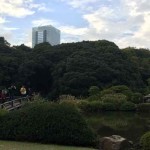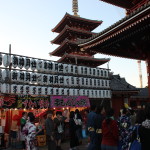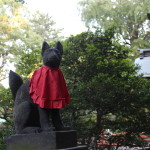Now you understand three principles to enjoy Japanese garden in our previous post. The second principle, symbolization (mitate) is an important key to understand and enjoy a dry landscape garden or karesansui teien (枯山水庭園). As mentioned, a dry landscape garden is highly abstract. All natural objects such as mountains, water falls, flow of brook, and trees are represented by rocks, stones and moss. Some dry landscape gardens were designed to create the environment of zen training for zen monks. It is said that visitors are supposed to communicate with the garden silently and find your way of understanding the intention of the designer. This type of garden is designed to enjoy from inside the building sitting on the floor.
On the contrary, to enjoy the pond gardens, which are larger than dry landscape gardens, it is nice to walk in the garden as most of the case it is designed to do so. Usually a pond garden has several view spots which imitated famous landscapes in all over Japan. For example, Rikugien in Tokyo has 88 imitated landscapes taken from ancient poets. They require you already knew the ancient poets and landscapes described in them. Owner of the garden and the guests would have enjoyed and sometimes tested the intellectual knowledge of literature.
Finally, there are some pond gardens which are designed to see from inside the room. The best position to sit is in front of the alcove called tokonoma in the room where the most important guest is expected to sit down. From that position, pillars or walls play the role of a picture frame. You will enjoy the garden as a piece of painting. There are several gardens which are famous for the framed view, such as Enkoji temple and Hosen-in in Kyoto.
Became interested in Japanese gardens? koi Travel offers you unique Japanese garden experiences!



